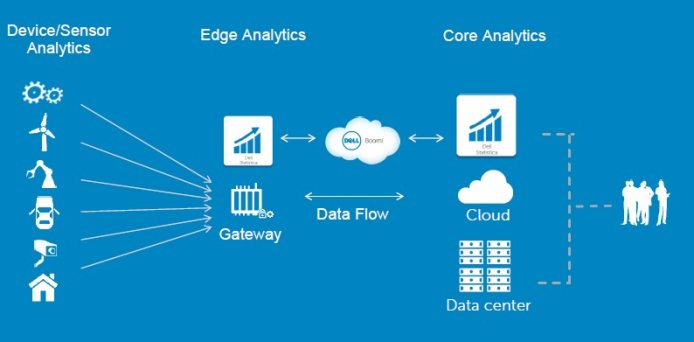For enterprises, the Internet of Things (IoT) brings many advantages through access to better insights gained from Big Data. So it all comes down to the important data generated by billions of smart devices and sensors. This presents new challenges because of the sheer speed and size of the data collected.
According to Cisco, everyone and everything connected to the internet will generate a staggering 507.5 zettabytes of data by 2019. Processing and analyzing all this data is a huge challenge for companies.
Not only do businesses have to maintain a robust infrastructure to keep everything online and communicating, they also need data analysis to be conducted quickly to provide crucial insights to drive enhanced productivity and revenue.
To avoid delays (bandwidth congestion) and conduct data analytics a lot faster, organizations have been forced to get creative. The solution to this growing problem is the idea of “edge analytics” that’s gaining a lot of momentum.
Edge Analytics Defined
What’s known as edge analytics or distributed analytics is essentially systems that are designed to conduct analytics close to the point of origin (where the data was collected). Usually, this is where actions based on data is also critical to boost performance.
If businesses design centralized systems where all the collected data is sent in a raw state to a data warehouse, it will take a while before it’s cleaned and analyzed to extract any value. But by performing analytics at the edge of the system, you can significantly improve speed while avoiding data congestion.
At the moment, most of the analytics and management of data is performed at enterprise data centers or in the cloud. But this concept hasn’t really taken off with IoT technology providers who are promoting an edge computing or fog computing model.

- Edge analytics architecture. Image: cbronline.com
Key Benefit to Businesses
There are several benefits to engaging in edge analytics, but the primary benefit is the opportunity to monetize insights (both internally and externally).
These insights can be vital when in comes to finding new opportunities to generate revenue, save costs, and time. For example, Harley-Davidson embedded location awareness devices and sensors in its facility in York, PA. This had a dramatic impact as it reduced the time it took to build a customized motorbike from 21 days to 6 hours.
How Does Edge Computing Work?
If you follow the edge computing model, all the connected devices and sensors will transmit data to an edge computing device nearby. This can be a gateway device like a router or a switch to process or analyze the data.
This negates the need to send it to a remote data center or Cloud. With an estimated 5.6 billion IoT devices to be utilized by governments and enterprises by 2020, it’s fair to predict that they will follow the concept of edge analytics.
The edge computing model is uniquely suited to IoT applications for the following reasons:
- Lower costs related to data management
- Lower costs related to operations
- Guarantee that other IT assets will remain functional (even when a device malfunctions)
- Real-time analysis of data
- Reduced data sent back to the Cloud
As a result, edge computing can significantly enhance the energy, manufacturing, transportation, and utility industries.
Edge Analytics with Machine Learning
Implementing edge computing for IoT won’t be an easy task. As a result, emerging standards will be vital to simplify the process.
What can reduce the complexity of deploying edge computing is machine learning analytics tools.
Machine-learning can be described as the study of algorithms that are able to learn from experience and examples. This can enable companies to easily automate repetitive tasks and processes enabling analytics to be performed at the edge of the network. As a result, the flow of information will be significantly more efficient while cutting down on network latency and associated costs.
Online casino ratings is one of these perfect problems for machine learning algorithms and specifically classification neural networks. So it makes sense that edge analytics will be the future of data science and it hasn’t gone unnoticed. Many companies are making the fundamental shift to open-source machine-learning libraries to better collaborate and build better tools. This is a great sign for the industry as a whole.
According to ABI Research, as machine-learning-as-a-service (MLaaS) models become popular, revenue from machine-learning data analytics could reach almost $20 billion by 2021.
Like Big Data was the buzz a couple of years ago, it’s edge data that’s creating all the excitement today. As the industry sees rapid growth, it will be interesting to see how edge computing evolves over the next few months, won't it?






